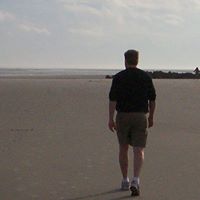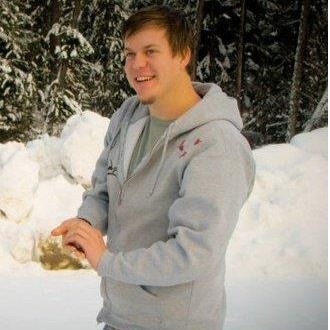Peter J Ford
age ~39
from University Place, WA
Peter Ford Phones & Addresses
- 2515 Narrows Dr, Tacoma, WA 98406 • 253 752-7804
- 6302 N 45Th St, Tacoma, WA 98407
- University Place, WA
- 11300 1St St, Seattle, WA 98125 • 206 453-4239
- 234 10Th Ave E, Seattle, WA 98102 • 206 390-2614
Work
-
Company:Peter ford
-
Address:31422 Ne 108Th - Carnation, Vashon, WA 98013
-
Phones:425 788-4099
-
Position:Partner
-
Industries:Drug Stores and Proprietary Stores
Education
-
Degree:Associate degree or higher
Wikipedia References

Peter Ford (Actor)

Peter Ford (Artist)

Peter Ford (Diplomat)

Peter Ford (Entertainment Reporter)

Peter Ford (Gaelic Footballer)

Peter Ford (Transport Administrator)
Us Patents
-
Selectively Utilizing An Automatically Generated Internet Protocol Address In A Networked Environment
view source -
US Patent:6687755, Feb 3, 2004
-
Filed:Jun 27, 2000
-
Appl. No.:09/605034
-
Inventors:Peter S. Ford - Carnation WA
Pradeep Bahl - Redmond WA
Greg Burns - Seattle WA
Frank Beeson - Kenmore WA -
Assignee:Microsoft Corporation - Redmond WA
-
International Classification:G06F 1516
-
US Classification:709245, 709249, 709238, 709221
-
Abstract:The utilization is described of an automatically generated Internet protocol (âIPâ) address in a networked environment. An IP address is automatically generated and used while an IP address server is unavailable or unreliable. The system used either the automatically generated IP address or the assigned address depending on certain circumstances. For example, if the IP address server repeatedly assigns conflicting IP address, the system continues to use the generated IP address despite having received an assigned IP address from the IP address server. Also, if the communication is within a common local area network, the generated IP address is used so as to avoid encryption of the communication in accordance with TCP/IP protocol.
-
Dynamic Self-Configuration For Ad Hoc Peer Networking Using Mark-Up Language Formated Description Messages
view source -
US Patent:6892230, May 10, 2005
-
Filed:Feb 1, 2000
-
Appl. No.:09/496318
-
Inventors:Ye Gu - Seattle WA, US
Peter S. Ford - Carnation WA, US
Holly Knight - Woodinville WA, US
Yaron Y. Goland - Redmond WA, US
Paul J. Leach - Seattle WA, US -
Assignee:Microsoft Corporation - Redmond WA
-
International Classification:G06F015/177
H04L012/28 -
US Classification:709220, 370254, 713 1
-
Abstract:A device control model provides an integrated set of addressing, naming, discovery and description processes that enables automatic, dynamic and ad-hoc self-setup by devices to interoperate with other devices on a network. This permits a computing device when introduced into a network to automatically configure so as to connect and interact with other computing devices available on the network, without a user installation experience and without downloading driver software or persisting a configuration setup for connecting and interacting with such other computing devices. Upon completing interaction with such other devices, the computing device automatically releases the setup for such other devices so as to avoid persistent device configurations that might create a configuration maintenance and management burden.
-
Xml-Based Template Language For Devices And Services
view source -
US Patent:6910068, Jun 21, 2005
-
Filed:Mar 16, 2001
-
Appl. No.:09/811362
-
Inventors:William M. Zintel - Kenmore WA, US
Amar S. Gandhi - Redmond WA, US
Ye Gu - Seattle WA, US
Shyamalan Pather - Redmond WA, US
Jeffrey C. Schlimmer - Redmond WA, US
Christopher M. Rude - Redmond WA, US
Daniel R. Weisman - Kirkland WA, US
Donald R. Ryan - Redmond WA, US
Paul J. Leach - Seattle WA, US
Ting Cai - Redmond WA, US
Holly N. Knight - Woodinville WA, US
Peter S. Ford - Carnation WA, US -
Assignee:Microsoft Corporation - Redmond WA
-
International Classification:G06F015/177
-
US Classification:709220, 709218, 709225, 709229, 709249
-
Abstract:A universal plug and play (UPnP) device makes itself known through a set of processes-discovery, description, control, eventing, and presentation. Following discovery of a UPnP device, an entity can learn more about the device and its capabilities by retrieving the device's description. The description includes vendor-specific manufacturer information like the model name and number, serial number, manufacturer name, URLs to vendor-specific Web sites, etc. The description also includes a list of any embedded devices or services, as well as URLs for control, eventing, and presentation. The description is written by a vendor, and is usually based on a device template produced by a UPnP forum working committee. The template is derived from a template language that is used to define elements to describe the device and any services supported by the device. The template language is written using an XML-based syntax that organizes and structures the elements.
-
Managing Packet-Based Telephony
view source -
US Patent:7123609, Oct 17, 2006
-
Filed:May 23, 2002
-
Appl. No.:10/154056
-
Inventors:Daniel S. Glasser - Mercer Island WA, US
Peter S. Ford - Carnation WA, US
Jeremy D. Stone - Bellevue WA, US
Brian R. Daugherty - Bellevue WA, US -
Assignee:Microsoft Corporation - Redmond WA
-
International Classification:H04L 12/64
-
US Classification:370354, 370420
-
Abstract:A system for assisting a user in selecting a packet-based telephony service provider (“PBTSP”) from a group of PBTSPs, and in registering the user with the selected PBTSP for outbound and/or inbound calling. The selection of a particular PBTSP may be stored in a database, and this stored information may be used to enable the user to exchange telephone call data with one of the PBTSPs. One preferred system receives data from the user's computer device, determines whether the user is registered with one the PBTSPs and, if so, transmits data to the computer device which enables it to exchange telephone call data with one of the PBTSPs. The system also receives telephone call data from the computer device, accesses contact information for a PBTSP, and transmits the received telephone call data to the PBTSP using the accessed contact information.
-
Xml-Based Language Description For Controlled Devices
view source -
US Patent:7130895, Oct 31, 2006
-
Filed:Mar 16, 2001
-
Appl. No.:09/811236
-
Inventors:William Michael Zintel - Kenmore WA, US
Amar S. Gandhi - Redmond WA, US
Ye Gu - Seattle WA, US
Paul J. Leach - Seattle WA, US
Ting Cai - Redmond WA, US
Holly N. Knight - Woodinville WA, US
Peter S. Ford - Carnation WA, US -
Assignee:Microsoft Corporation - Redmond WA
-
International Classification:G06F 15/177
G06F 15/00 -
US Classification:709220, 715513
-
Abstract:A device control model provides an integrated set of addressing, naming, discovery and description processes that enables automatic, dynamic and ad-hoc self-setup by devices to interoperate with other devices on a network. This permits a computing device when introduced into a network to automatically configure so as to connect and interact with other computing devices available on the network, without a user installation experience and without downloading driver software or persisting a configuration setup for connecting and interacting with such other computing devices. Upon completing interaction with such other devices, the computing device automatically releases the setup for such other devices so as to avoid persistent device configurations that might create a configuration maintenance and management burden.
-
Schema-Based Services For Identity-Based Data Access
view source -
US Patent:7302634, Nov 27, 2007
-
Filed:Oct 22, 2001
-
Appl. No.:10/017680
-
Inventors:Mark H. Lucovsky - Sammamish WA, US
Shaun Douglas Pierce - Sammamish WA, US
Steven D. White - Bellevue WA, US
Ramu Movva - Issaquah WA, US
Jagadeesh Kalki - Redmond WA, US
David Benjamin Auerbach - Seattle WA, US
Peter Sewall Ford - Carnation WA, US
Jay Christopher Jacobs - Danville CA, US
Paul Andrew Steckler - Redmond WA, US
Walter C. Hsueh - San Jose CA, US
Kendall D. Keil - Bothell WA, US
Burra Gopal - Redmond WA, US
Suresh Kannan - Redmond WA, US
Yi-Wen Guu - Bellevue WA, US
Samuel John George - San Mateo CA, US
William Raymond Hoffman - Berkeley CA, US
Philip Michael Smoot - San Francisco CA, US
Lijiang Fang - Sammamish WA, US
Michael B. Taylor - Seattle WA, US
Winnie C. Wu - Bellevue WA, US
Paul J. Leach - Seattle WA, US
Richard B. Ward - Redmond WA, US -
Assignee:Microsoft Corporation - Redmond WA
-
International Classification:G06F 15/00
G06F 17/00
G06F 15/16 -
US Classification:715500, 7155011, 715513, 707 10, 709203, 709217
-
Abstract:A schema-based service for Internet access to per-user services data, wherein access to data is based on each user's identity. The service includes a schema that defines rules and a structure for each user's data, and also includes methods that provide access to the data in a defined way. The services schema thus corresponds to a logical document containing the data for each user. The user manipulates (e. g. , reads or writes) data in the logical document by data access requests through defined methods. In one implementation, the services schemas are arranged as XML documents, and the services provide methods that control access to the data based on the requesting user's identification, defined role and scope for that role. In this way, data can be accessed by its owner, and shared to an extent determined by the owner.
-
Method For Automatic Tuning Of Tcp Receive Window Based On A Determined Bandwidth
view source -
US Patent:7380006, May 27, 2008
-
Filed:Dec 14, 2000
-
Appl. No.:09/736988
-
Inventors:Nk Srinivas - Issaquah WA, US
Art Shelest - Sammamish WA, US
Peter S. Ford - Carnation WA, US -
Assignee:Microsoft Corporation - Redmond WA
-
International Classification:G06F 15/16
G06F 15/173 -
US Classification:709227, 709217, 709223, 709226, 709228, 709235, 370229, 370235, 370401
-
Abstract:A method and system are directed at automatically tuning a TCP receive window (RWIN). The size of the RWIN may be determined by attributes of a network card. One attribute used to size the RWIN is the speed of the adapter card. The adapter speed is readily available by polling the network card. Once the speed is known, the size of the RWIN is selected from a table and is automatically set. Alternatively, the size of the RWIN may be determined by a formula.
-
Xml-Based Template Language For Devices And Services
view source -
US Patent:7437434, Oct 14, 2008
-
Filed:Nov 4, 2004
-
Appl. No.:10/981057
-
Inventors:William Michael Zintel - Kenmore WA, US
Amar S. Gandhi - Redmond WA, US
Ye Gu - Seattle WA, US
Shyamalan Pather - Redmond WA, US
Jeffrey C. Schlimmer - Redmond WA, US
Christopher M. Rude - Redmond WA, US
Daniel R. Weisman - Kirkland WA, US
Donald R. Ryan - Redmond WA, US
Paul J. Leach - Seattle WA, US
Ting Cai - Redmond WA, US
Holly N. Knight - Woodinville WA, US
Peter S. Ford - Carnation WA, US -
Assignee:Microsoft Corporation - Redmond WA
-
International Classification:G06F 15/177
G06F 12/00 -
US Classification:709220, 709221
-
Abstract:A universal plug and play (UPnP) device makes itself known through a set of processes—discovery, description, control, eventing, and presentation. Following discovery of a UPnP device, an entity can learn more about the device and its capabilities by retrieving the device's description. The description includes vendor-specific manufacturer information like the model name and number, serial number, manufacturer name, URLs to vendor-specific Web sites, etc. The description also includes a list of any embedded devices or services, as well as URLs for control, eventing, and presentation. The description is written by a vendor, and is usually based on a device template produced by a UPnP forum working committee. The template is derived from a template language that is used to define elements to describe the device and any services supported by the device. The template language is written using an XML-based syntax that organizes and structures the elements.
Isbn (Books And Publications)
-
The Keeper Of Dreams : A Novel
view source -
Author:Peter Shann Ford
-
ISBN #:0684872196
-
The Keeper Of Dreams
view source -
Author:Peter Shann Ford
-
ISBN #:0743214749
-
Tekkin A Waalk Along The Miskito Coast
view source -
Author:Peter Ford
-
ISBN #:0002550024
-
True History Of The Elephant Man
view source -
Author:Peter Ford
-
ISBN #:0140165150
-
All About Drugs
view source -
Author:Peter Ford
-
ISBN #:0171474015
-
The E-Revolution And Post-Compulsory Education: Using E-Business Models To Deliver Quality Education
view source -
Author:Peter Ford
-
ISBN #:0203938356
-
Managing Change In Higher Education: A Learning Environment Architecture
view source -
Author:Peter Ford
-
ISBN #:0335197914
-
The Story Of Zahra
view source -
Author:Peter Ford
-
ISBN #:0385471300
Medicine Doctors

Peter Ford
view sourceSpecialties:
Thoracic Surgery, Vascular Surgery
Work:
Vascular Solutions
7800 Providence Rd STE 209, Charlotte, NC 28226
704 544-7535 (phone), 704 544-7570 (fax)
7800 Providence Rd STE 209, Charlotte, NC 28226
704 544-7535 (phone), 704 544-7570 (fax)
Education:
Medical School
Monash Univ, Fac of Med, Clayton, Vic, Australia
Graduated: 1997
Monash Univ, Fac of Med, Clayton, Vic, Australia
Graduated: 1997
Languages:
English
Spanish
Spanish
Description:
Dr. Ford graduated from the Monash Univ, Fac of Med, Clayton, Vic, Australia in 1997. He works in Charlotte, NC and specializes in Thoracic Surgery and Vascular Surgery. Dr. Ford is affiliated with Carolina Health Care System Union.

Peter A. Ford
view sourceSpecialties:
General Surgery, Bariatrician
Work:
Hartford Healthcare Medical GroupHartford Healthcare Medical Group General Surgery
85 Seymour St STE 415, Hartford, CT 06106
860 246-2071 (phone), 860 524-2650 (fax)
85 Seymour St STE 415, Hartford, CT 06106
860 246-2071 (phone), 860 524-2650 (fax)
Languages:
English
Spanish
Spanish
Description:
Mr. Ford works in Hartford, CT and specializes in General Surgery and Bariatrician. Mr. Ford is affiliated with Hartford Hospital.

Peter G. Ford
view sourceDescription:
Dr. Ford graduated from the Tufts University School of Medicine in 1995. He works in Santa Maria, CA and 1 other location and specializes in Dermatology. Dr. Ford is affiliated with Goleta Valley Cottage Hospital and Santa Barbara Cottage Hospital.
Name / Title
Company / Classification
Phones & Addresses
General Manager
Door Doctor
Garage Doors & Openers
Garage Doors & Openers
5649 Power Road, Ottawa, ON K1G 3N4
613 749-3667, 613 746-3130
613 749-3667, 613 746-3130
Partner
Peter Ford
Drug Stores and Proprietary Stores
Drug Stores and Proprietary Stores
31422 Ne 108Th - Carnation, Vashon, WA 98013
Director
Ford Hart Hardwoods, Inc
General Manager
Door Doctor
Garage Doors & Openers
Garage Doors & Openers
613 749-3667, 613 746-3130
Lawyers & Attorneys

Peter Ford - Lawyer
view sourceOffice:
Peter G. Ford Attorney at Law
Specialties:
Real Property Law
Communications & Media
Estate Planning
Communications & Media
Estate Planning
ISLN:
907341473
Admitted:
1983
University:
State University of New York, B.A., 1979
Law School:
Albany Law School of Union University, J.D., 1983

Peter Ford - Lawyer
view sourceOffice:
Norton Rose LLP
Specialties:
Employment
Non Contentious Pensions
Non Contentious Pensions
ISLN:
900461901
Admitted:
1988
Youtube

Peter Peachy Ford
view source
Peter Aundre Ford
view source
Peter Ford Sr.
view source
Peter J Ford IV
view source
Dustin Peter Ford Moody
view source
Peter Ford
view source
Peter Ford IV
view source
Peter Ford
view sourceClassmates

Peter Ford
view sourceSchools:
Rye Country Day School Rye NY 1970-1974
Community:
David Hood, Elizabeth Schaper, Avery Leavitt, Cecily Paschal, Jeanne Terone

Peter Ford
view sourceSchools:
Gull Lake High School Richland MI 1985-1989
Community:
Kay Barker, Sheila Smith

Peter Ford
view sourceSchools:
West Point Elementary School West Point NY 1971-1975, West Point Middle School West Point NY 1971-1975
Community:
Claudia Bennett, Linda Storms, Coralinn Maus

Peter Ford
view sourceSchools:
Adams Memorial High School Adams MA 1965-1968
Community:
Beverly Liebenow

Peter Ford
view sourceSchools:
John B. Ehret High School Marrero LA 1978-1982
Community:
Michele Thrash

Peter Ford
view sourceSchools:
Teurlings High School Lafayette LA 2003-2007
Community:
Judith Leblanc, Margaret Peggy, Dean Landry, Karen Harris, Jim Gautreaux

Peter Ford
view sourceSchools:
East Norriton Middle School Norristown PA 1949-1953, Eisenhower High School Norristown PA 1953-1956
Community:
Ray Hoopes, Bobby Butler, Barry Watson

Peter Ford
view sourceSchools:
Galesburg-Augusta Middle School Galesburg MI 1995-1999
Community:
Jiniece Cummins
Myspace
Flickr
Plaxo

Peter Ford
view source
Peter Ford
view sourcePeter Ford at Bayside Christian Church

Peter Ford
view sourceMathematics Instructor at Green Dot Public Schools

Peter Ford
view sourceCoatesbourne
Googleplus

Peter Ford
Work:
EDE ONLINE - CMS Administrator
Education:
Cape University of Information & Technology
Relationship:
Single
About:
A form asked me: Religion: And I put "None" and then it asked me, Place of worship: And I put.. "Maranello"...

Peter Ford
Education:
Trinity College, Cambridge - Mathematics, RGS Worcester
About:
When I'm not doing maths, I spend a lot of my time playing the viola/piano, rowing and playing bridge.

Peter Ford
Lived:
Tacoma, WA
Work:
Bates Technical College - Simulation Technician
Education:
University of Washington

Peter Ford
Education:
City of Bath Boys School, Corsham regis

Peter Ford
Work:
NoTosh

Peter Ford
Work:
Merced Systems - Systems Administrator (2008)

Peter Ford
About:
My name is Peter and I am 26 years old (just turned 26 couple weeks ago). I am laid back person and I'm trying to get my life in order. I am from outside New Orleans, Louisiana and I'm current...
Tagline:
BigPeter1027

Peter Ford
Get Report for Peter J Ford from University Place, WA, age ~39




















